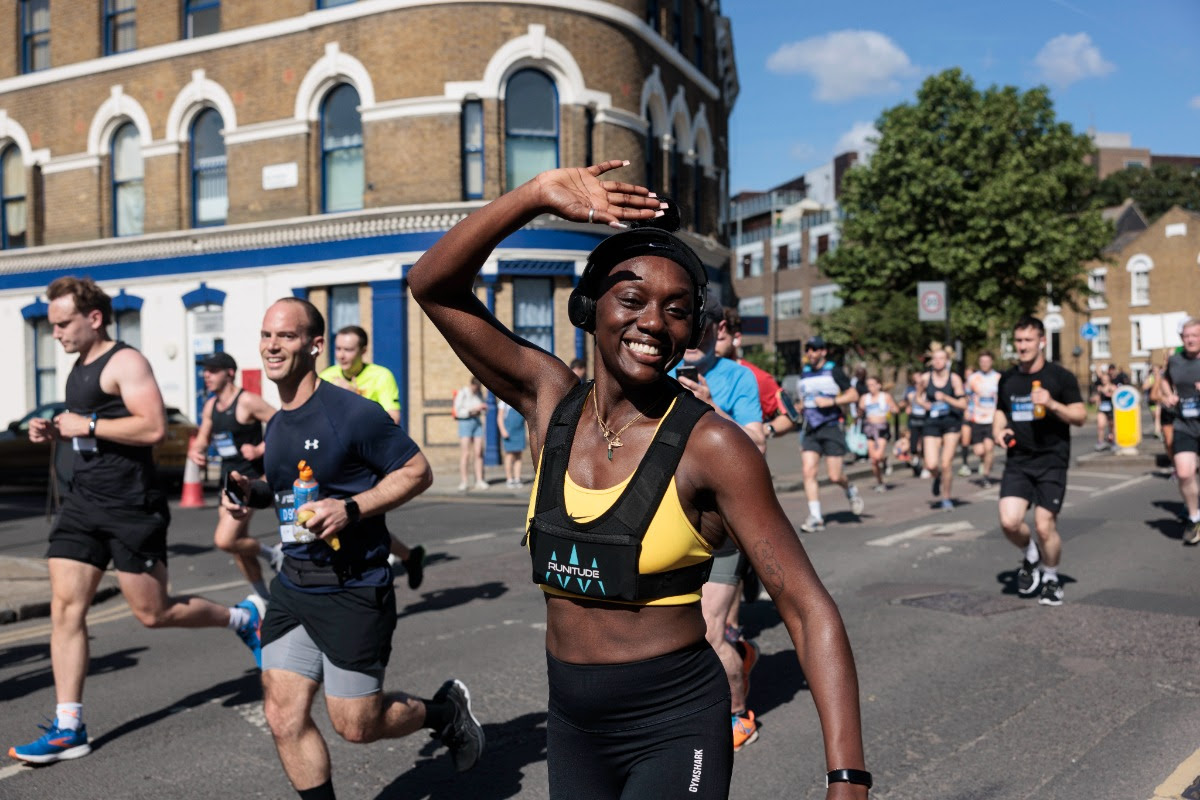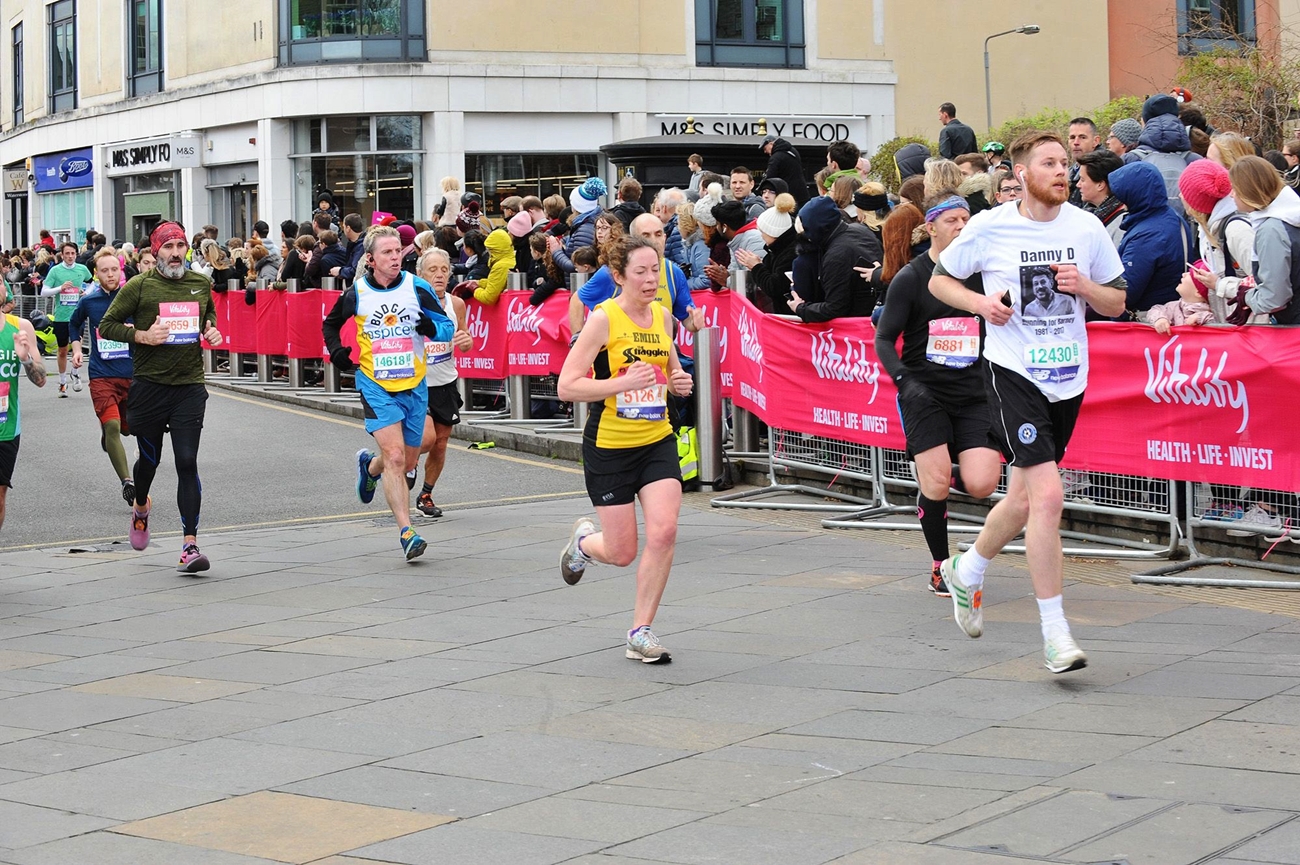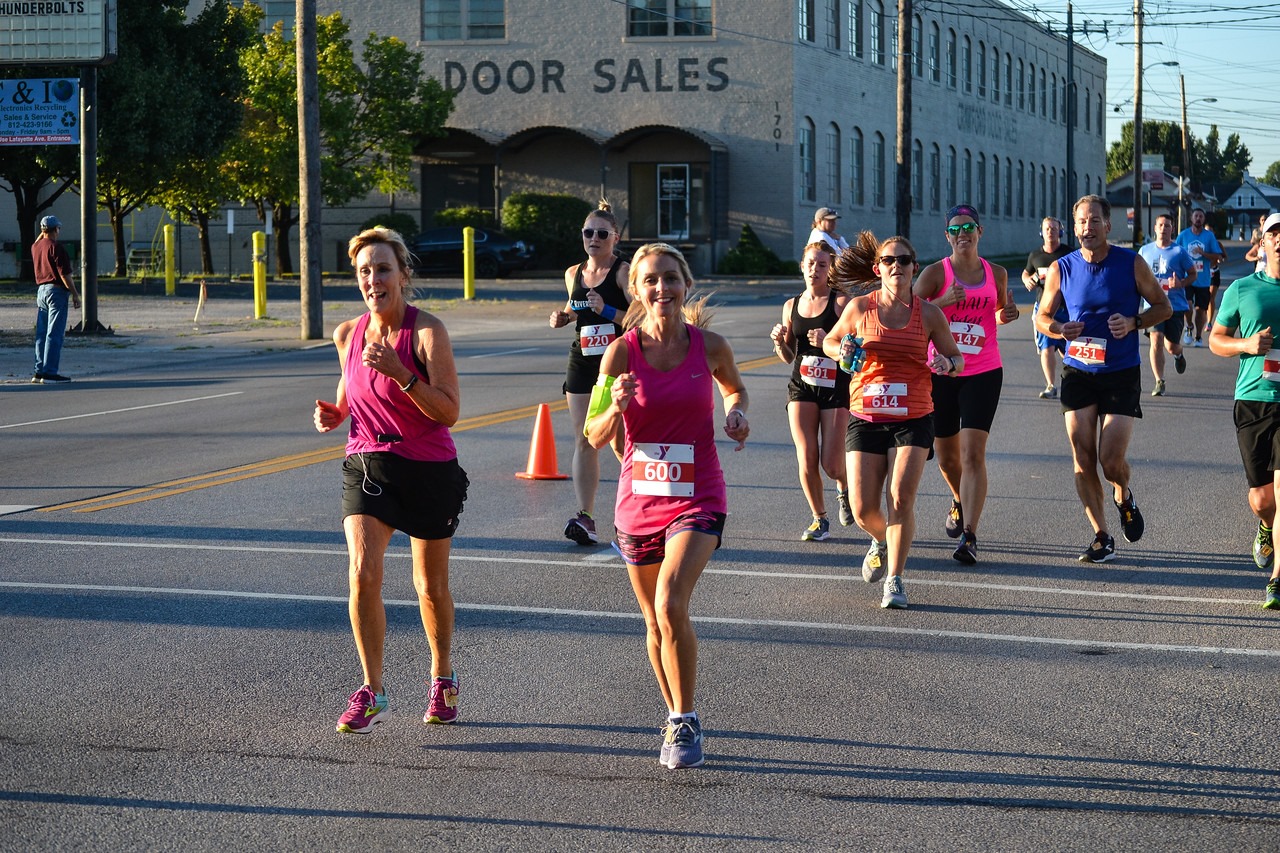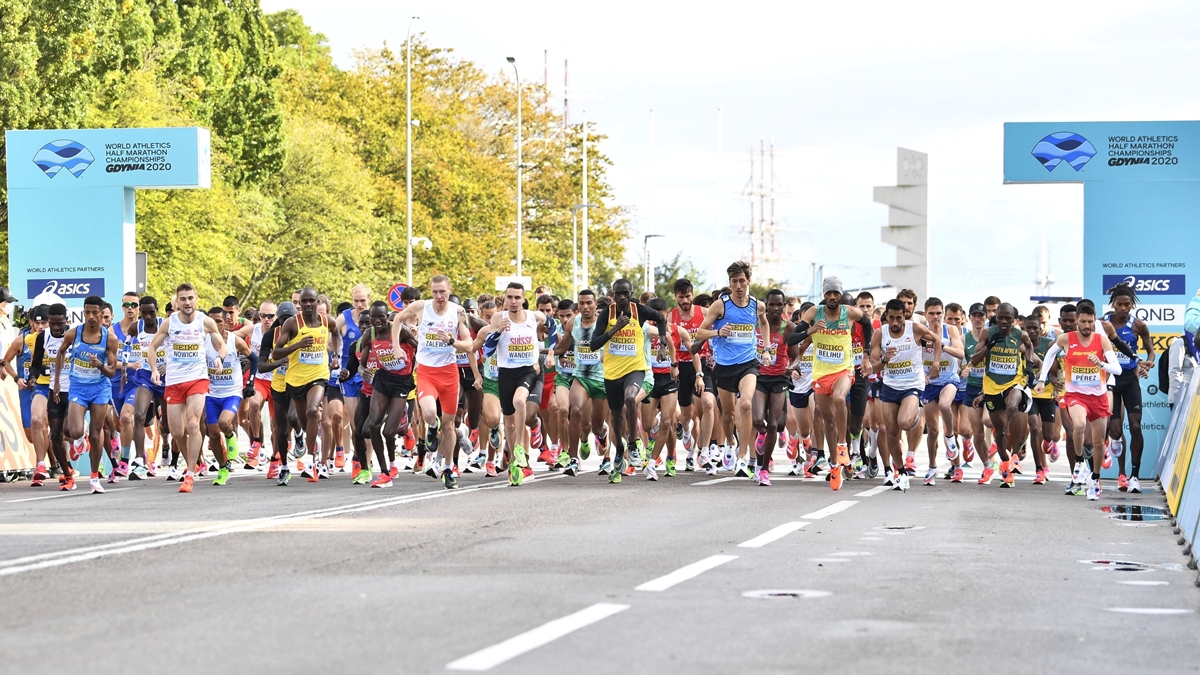

Featured
What Pace For Half Marathon
Modified: January 2, 2024
Discover the featured half marathon pace that will optimize your performance. Get expert tips and strategies to achieve your best time and cross the finish line with confidence.
Introduction
Running a half marathon is a significant challenge that requires careful preparation and planning. Whether you’re a seasoned runner or a beginner looking to conquer this distance, determining your ideal pace is crucial for a successful race. Pace refers to the speed at which you run each mile throughout the race. Finding the right pace that suits your fitness level and goals can greatly impact your performance and overall experience.
Setting the right pace for a half marathon is a balance between pushing yourself and avoiding burnout. Ideally, you want to find a pace that challenges you but is also sustainable throughout the race. In this article, we will explore the various factors that can affect your half marathon pace and provide training strategies and tips to help you maintain your desired pace during the race.
It’s important to note that determining an ideal pace is highly individual and depends on factors such as your fitness level, previous running experience, and personal goals. While some runners aim to cross the finish line as quickly as possible, others may prioritize completing the distance without pushing themselves too hard. Whatever your goal may be, understanding the factors that influence your pace and implementing effective training strategies can help you achieve optimum results.
Now that we have introduced the concept of pace and its significance in a half marathon let’s delve deeper into the various factors that can influence your ideal pace.
Finding Your Ideal Pace
When it comes to finding your ideal pace for a half marathon, it’s crucial to consider both your current fitness level and your future goals. Here are a few steps to help you determine the pace that is right for you:
- Evaluate your current fitness: Before embarking on any training program, assess your current fitness level. This includes factors such as your average running speed, endurance, and recovery time. Be honest with yourself and take into account any recent improvements or setbacks. This self-assessment will serve as a starting point for selecting an attainable pace.
- Set realistic goals: Determine what you want to achieve in the half marathon. Are you aiming to finish within a specific time frame, or is your goal simply to complete the race? Setting realistic goals will help you select a pace that is challenging yet achievable.
- Use a pace calculator: Utilize online pace calculators to estimate your ideal pace. These calculators take into account your desired finish time, distance, and other variables to provide you with a recommended pace per mile. While calculators are helpful tools, remember to adjust the suggested pace based on your personal capabilities and goals.
- Listen to your body: Pay attention to how your body feels during training runs. If you find that your current pace is too easy or too challenging, adjust accordingly. Your body is an excellent indicator of what is sustainable for you, so don’t be afraid to make modifications as needed.
Remember, finding the right pace is not a one-size-fits-all approach. It requires self-awareness, experimentation, and adjustments along the way. Trust your instincts and be open to making changes to optimize your performance.
In the next section, we will explore the various factors that can affect your half marathon pace and how to account for them in your training.
Factors Affecting Half Marathon Pace
Several factors can influence your half marathon pace. It’s essential to consider these factors when determining your ideal pace and during your training. Let’s explore some of the key factors:
- Fitness Level: Your current fitness level plays a significant role in determining your pace. The more fit and conditioned you are, the faster you can likely run. Regular training and endurance-building exercises can help improve your fitness level and ultimately impact your pace.
- Terrain: The terrain of the race course can affect your pace. Running on flat, smooth surfaces like roads or tracks allows for faster speeds compared to hilly or uneven terrains. Consider the elevation profile of the race course and adjust your pace accordingly.
- Weather Conditions: Weather conditions, such as heat, humidity, wind, or extreme cold, can significantly impact your pace. Running in high temperatures or strong winds can make it more challenging to maintain your desired pace. Be prepared to adjust your pace based on the weather conditions on race day.
- Course Strategy: Your strategy for tackling the course can also affect your pace. For instance, starting too fast can lead to early exhaustion and a slower overall pace. Plan your race strategy, considering factors such as pacing yourself, conserving energy for challenging sections, and making strategic surges if necessary.
- Mental Stamina: Half marathons require mental toughness, as well as physical endurance. Your mental mindset and ability to focus and push through fatigue can impact your pace. Incorporating mental training techniques, such as visualization and positive self-talk, can help improve your mental stamina and subsequently affect your pace.
It’s important to note that these factors can interact with one another and vary from person to person. Take time to understand how each of these factors affects your running and adjust your pace accordingly during training and on race day to optimize your performance.
In the next section, we will discuss training strategies tailored to different pace goals.
Training Strategies for Different Pace Goals
Training for a half marathon requires a strategic approach, especially when it comes to pacing. The training strategies you adopt should align with your pace goals. Here are some strategies based on different pace objectives:
- Sub-1:30 (Elite Runners): If you’re an experienced runner aiming for an impressive time of under 1 hour and 30 minutes, your training should focus on speed, endurance, and maintaining a steady pace. Incorporate interval training, tempo runs, and long runs at or near your goal pace. Gradually increase the intensity and distance of your runs over time to build endurance.
- 1:30-2:00 (Competitive Runners): For runners looking to finish between 1 hour and 30 minutes to 2 hours, a balanced combination of speed work and endurance training is key. Include tempo runs at race pace, interval training to improve speed, and weekly long runs to build endurance. Aim to gradually increase your mileage and practice maintaining a consistent pace throughout your runs.
- 2:00-2:30 (Recreational Runners): If completing the half marathon comfortably is your goal, focus on building endurance and maintaining a sustainable pace. Incorporate longer runs at conversational pace, gradually increasing your mileage each week. Include regular tempo runs to improve your race pace and build confidence. Don’t hesitate to take walk breaks during long runs if needed.
- 2:30+ (First-Time Runners and Newbies): For beginners or those aiming to simply complete the half marathon, focus on building a strong base and gradually increasing your mileage. Start with a run-walk approach, gradually extending the running intervals. Incorporate cross-training activities to improve overall fitness and reduce the risk of injury. Your primary goal should be to comfortably complete the distance, so don’t worry too much about speed.
Regardless of your pace goal, it’s essential to establish a training plan that includes a mix of long runs, speed work, rest days, and cross-training. Listen to your body, allow for proper recovery, and be consistent with your training to improve your pace and overall performance.
In the next section, we will provide tips for maintaining your pace during a half marathon.
Tips for Maintaining Your Pace During a Half Marathon
Maintaining a steady pace throughout a half marathon is crucial for achieving your desired time goal and avoiding burnout. Here are some tips to help you maintain your pace during the race:
- Start Slow and Gradually Build: It’s important to resist the temptation to start too fast in the beginning. Begin at a comfortable pace and gradually increase your speed as the race progresses.
- Stick to Your Race Plan: Create a race plan that includes target mile splits based on your desired pace. Stick to this plan as closely as possible, adjusting only if necessary due to unexpected circumstances.
- Use a GPS Device or Running App: Utilize a GPS device or running app to track your pace in real-time. This will help you stay on target and make adjustments if you’re deviating from your desired pace.
- Focus on Breathing and Relaxation: Pay attention to your breathing and focus on maintaining steady, relaxed breaths. This will help conserve energy and prevent premature fatigue.
- Break the Race into Smaller Segments: Mentally divide the race into smaller segments or markers. Focus on reaching each milestone, such as the next water station or mile marker, rather than thinking about the entire distance. This helps keep your mind focused and motivated.
- Stay Hydrated and Fuel Properly: Proper hydration and fueling can help maintain energy levels and prevent muscle cramps. Take advantage of aid stations, sipping water or sports drinks as needed. Consume energy gels or snacks strategically to avoid hitting a wall.
- Stay Positive and Stay in the Zone: Maintaining a positive mindset is crucial for staying on pace. Avoid negative self-talk and focus on your training and preparation. Stay in the zone by using visualization techniques and reminding yourself of your race goals.
- Listen to Your Body: Pay attention to any signs of fatigue or pain. If needed, adjust your pace slightly to ensure you don’t push yourself too hard and risk injury.
Remember, maintaining your pace during a half marathon requires both physical and mental discipline. Trust your training, stay focused, and implement these tips to optimize your performance on race day.
In the next section, we will discuss common mistakes to avoid when setting your pace.
Common Mistakes to Avoid in Pace Setting
Setting the right pace for a half marathon can be challenging, and many runners make common mistakes that can negatively impact their performance. Here are some common mistakes to avoid when setting your pace:
- Starting Too Fast: One of the most common mistakes is starting the race at a pace that is faster than your sustainable speed. This can lead to early fatigue and make it difficult to maintain your pace later in the race.
- Ignoring Your Training: Failing to take into account your training runs and pace during the actual race can result in setting an unrealistic or unsustainable pace. Trust in the work you’ve put into your training and set a pace that reflects your fitness level.
- Not Adjusting for Course Terrain: Neglecting to consider the terrain of the race course can lead to pacing errors. Adjust your pace for hills and uneven surfaces to avoid burning out too early or losing momentum.
- Overestimating Your Abilities: Setting a pace that is too ambitious for your current fitness level can lead to early exhaustion and potential injury. Be realistic about your capabilities and choose a pace that is challenging yet attainable.
- Failure to Plan for Race-Day Conditions: Not accounting for weather conditions such as heat, humidity, or wind can throw off your pace. Adjust your pace strategy accordingly, taking into account the impact these factors may have on your performance.
- Ignoring Signals from Your Body: Ignoring signs of fatigue, pain, or discomfort during the race can lead to overexertion and a decline in performance. Listen to your body and make necessary adjustments to your pace to avoid injury and maintain your overall performance.
Avoiding these common mistakes in pace setting can lead to a more enjoyable and successful half marathon experience. By being mindful of these pitfalls and adjusting your strategy accordingly, you will be better equipped to achieve your pace goals and cross the finish line with confidence.
In the final section, we will summarize the main points discussed in this article.
Conclusion
Setting the right pace for a half marathon is a critical aspect of a successful race. Whether you’re aiming for a fast finish time or simply looking to complete the distance comfortably, finding your ideal pace requires careful consideration of your fitness level, goals, and race conditions. By evaluating these factors and implementing appropriate training strategies, you can improve your performance and enhance your overall race experience.
Throughout this article, we discussed the process of finding your ideal pace, the factors that can affect half marathon pace, training strategies for different pace goals, tips for maintaining your pace during the race, and common mistakes to avoid in pace setting. Remember to be realistic, adjust for race-day conditions, and listen to your body to avoid the pitfalls that can hinder your performance.
As you embark on your half marathon journey, keep in mind that pace is not the only measure of success. Enjoy the challenge, celebrate your progress, and embrace the experience of crossing that finish line. Half marathon training and racing is an opportunity for personal growth, pushing limits, and discovering the strength within you.
Now armed with the knowledge of pace setting, go out there, put in the work, and lace up for an incredible half marathon experience. Good luck!









